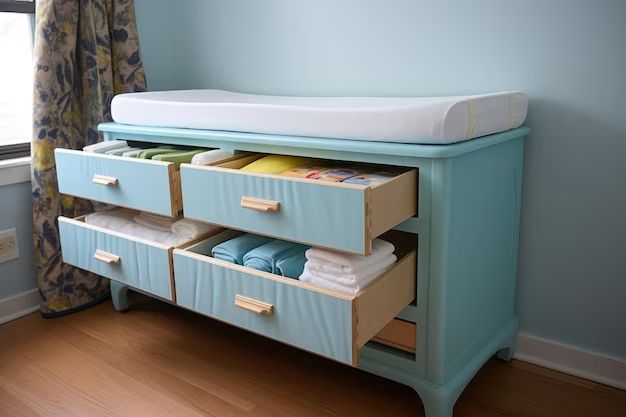Baby proofing your home is an important step to help keep your little one safe as they begin exploring their surroundings. One area that is often overlooked is baby proofing dresser drawers. While it may seem harmless to leave dresser drawers accessible, it can actually pose a serious danger to curious toddlers and babies. In this article, we’ll explore why you should baby proof dresser drawers, when to start proofing them, and different methods you can use to make dressers safer.
Page Contents
Why Should You Baby Proof Drawers?
There are a few key reasons why baby proofing dresser drawers is so important:
Risk of falling furniture
Babies love to pull up and climb on furniture as they learn to stand and walk. If they are able to open dresser drawers, they can easily pull the dresser over on top of themselves if it is not securely anchored to the wall. This can cause serious injury and even death. According to the U.S. Consumer Product Safety Commission (CPSC), a child is injured every 24 minutes in the U.S. by falling furniture, appliances or TVs. Baby proofing dressers helps eliminate this hazard.
Choking and strangulation hazards
Babies explore with their hands and mouths. If they can access drawers, they may find small objects to choke on or get strings, blind cords or clothing ties wrapped around their necks. Open dresser drawers create easy access to these strangulation hazards that can fatally strangle a child in seconds.
Climbing risk
Once mobile, babies love to climb! They can use open drawers as a ladder to boost themselves up higher on furniture. A child falling from a dresser can lead to serious injuries and concussions. Baby proofing drawers helps prevent access to lower drawers that can be used as steps.
When Should You Start Baby Proofing Drawers?
The timeline for baby proofing dressers aligns closely with when your child starts crawling and pulling up to stand, usually around 6-12 months old. Here are some age guidelines:
6-7 months
At this age, babies start sitting up well on their own and reaching for objects around them. It’s a good time to start anchoring any freestanding dressers and chests to the wall to prevent tip-overs.
9 months
Around this age, babies begin pulling up to stand while holding onto furniture. Open dresser drawers allow them to use the drawers like built-in steps, so installing baby locks is recommended.
12 months
By a year old, most babies are walking while holding onto furniture. All dresser drawers in the nursery and any other rooms baby has access to should now be locked.
You’ll likely need to baby proof drawers in multiple rooms once your little one is on the move. Dressers in the nursery, living spaces, bedrooms, play rooms and offices should all be secured.
Methods for Baby Proofing Drawers
There are several effective options when it comes to baby proofing dresser drawers:
Install drawer latches
Adhesive child safety latches make it impossible for little hands to open drawers. They attach to the inside of drawers with strong adhesive or screws. To open the drawer, adults must pinch the tabs together to disengage the lock. Look for latches designed specifically for dressers that can withstand repeated opening and closing without failing.
| Pros | Cons |
|---|---|
|
|
Use drawer stops
Drawer stops block the drawer from opening fully. They are plastic devices inserted into the drawer track behind the drawer front. When the drawer is pulled out, it hits the stop and can only open a couple inches, not allowing full access inside.
| Pros | Cons |
|---|---|
|
|
Use cord shorts
Cord shorts are nylon straps that wrap around drawer pulls and tie together to keep them from fully opening. They deter access while still allowing parents to open drawers by untying them.
| Pros | Cons |
|---|---|
|
|
Use safety hook and eye locks
Adhesive backed hook and eye cabinet locks can be used to keep dresser drawers closed. Apply the hook side on the drawer front edge and the eye piece on the inside of the drawer opening. To open the drawer, you must disengage the hook from the eye lock.
| Pros | Cons |
|---|---|
|
|
Conclusion
Baby proofing dresser drawers is an essential step in childproofing your home. Open drawers pose serious fall, climbing, choking, and strangulation dangers to babies once they can pull up and walk. Safety latches, stops, cord shorts, and hook and eye locks all help make dressers more secure. Be sure to anchor dressers to the wall, and install locks on drawers in any room baby will be in starting around 6 months old. Taking action to safeguard dressers will give you peace of mind and help avoid tragic tip-overs and injuries during your baby’s exploratory first year. Stay diligent checking all safety devices frequently to be sure they are working properly and keeping your active little one safe as they grow.
